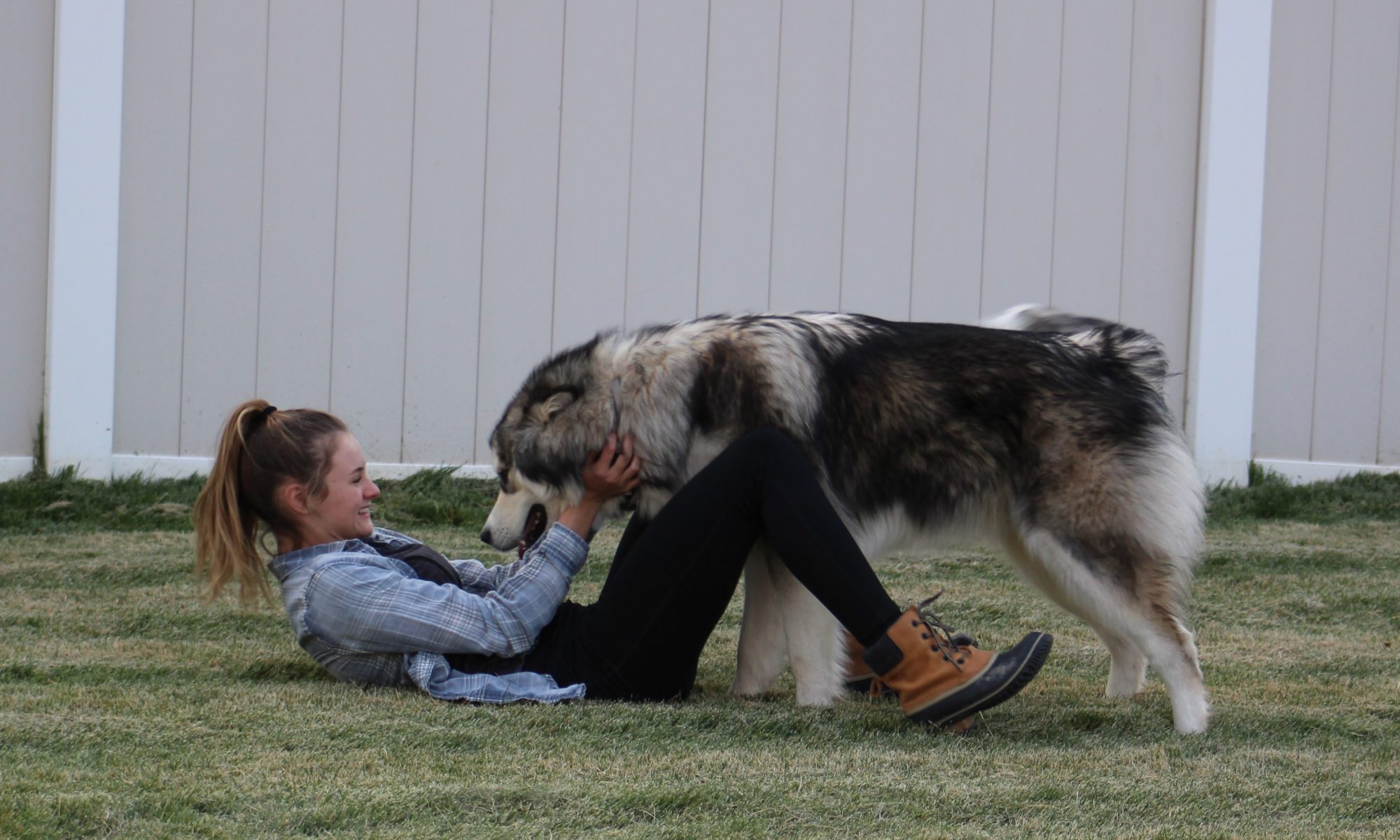



Even within the same breed coats can vary greatly making a close inspection necessary to determine overall body condition.
The question that gets raised all too often, “Is my dog fat?”, seems like an easy one to answer, so why do so many ask? For many dogs, just a quick glance can give you a good idea of their body condition, but what about the northern breeds and their relatives that have so much hair? Many people are drawn to dogs like the Alaskan Malamute because of their large size, so at the first moment they think the old fluff-ball might be skinny, “Watch out! Here come the groceries!” So how do we find that balance, a dog that looks great, performs well, and is not too fat or too skinny? Controlling and monitoring a dog’s food intake, regular health screenings, and continually checking body condition are all important to maintain a healthy pooch.
There are many opinions related to how much and how often a dog should be fed. Some keep food in front of their dog continually, some feed once daily, some multiple times daily, and some even every other day. As long as you are feeding your dog the right amount of the proper feed you can be successful with many different methods. I personally choose to feed my dogs twice daily and it works well for me. Too long between feedings can be uncomfortable for a dog, and food in front of them all the time makes it hard to monitor their intake. A good starting point for how much to feed your dog is by following the recommendations on the bag, and monitoring their condition, and then adjusting accordingly. One of the main reasons to control and keep track of intake is, often, the first sign of illness is a change in feeding behavior.
Most people who have owned a dog realize that, like people, dogs also have a need for occasional visits to the doctor. Laws vary from location to location, but at minimum all are legally required to keep their dog current on the rabies vaccination which can only be given by a veterinarian. Having a good veterinarian to direct and monitor your dog’s health is an absolute must. A good vet can give you breed specific information and hopefully help you prevent some heartache. Your vet can also help you determine an appropriate food choice and feeding schedule that is appropriate for both the age and breed of your dog.
Regularly checking a dog’s body condition is one of the most important things you can do to maintain a healthy and consistent weight. Long-haired or short, a method that can help you determine condition all starts with putting your hands on the pooch often. Start by appearance. Does your dog look fat or skinny? Feel for ribs. You want to be able to distinguish between each rib. You do not want it to feel like a bony skeleton with big voids between ribs nor do you want a sheet of fat covering the ribs making it impossible to feel individual ribs. Next, feel your way back behind the ribcage toward the flank. Your dog should taper upwards at the flank and not be a level line from the chest back. Dogs that do not taper at the flank are generally overweight. Next go to the hip bones. It is okay to feel a bump for each hip bone and to have a small amount of dip between bones, but not a big valley. As you monitor your dog regularly you will learn to find what is an ideal condition for your dog. Each breed is different so regular checks and advice from an expert, if needed, can help achieve the goal.
Whatever diet you choose for your dog be consistent and don’t hesitate to ask your vet for help. After gaining an understanding of what proper body condition is for your dog and regularly monitoring it, maintenance through proper diet, and health screenings, will improve the overall health of your loved companion. So next time someone asks you if their dog is too fat or too skinny, show them how to get through all the fluff and figure it out.
